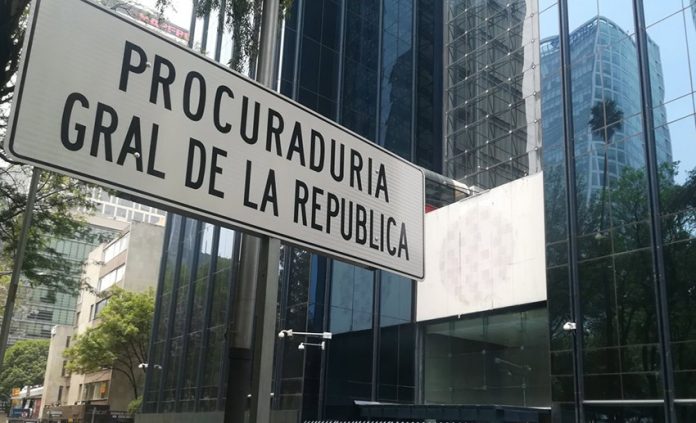In a case of mistaken identity federal authorities arrested and imprisoned the wrong man in connection with the 2014 abduction and presumed homicide of 43 teaching students from Ayotzinapa, Guerrero, according to the National Human Rights Commission (CNDH).
The organization said in a statement that it “has undoubted evidence” that Erick Uriel Sandoval Rodríguez was “wrongly arrested” by the federal Attorney General’s office (PGR) after it mistakenly identified him as the man known by the aliases of “El Güereque” and “La Rana” (The Frog).
The real man who is known by those nicknames and was allegedly involved in the students’ disappearance now lives in California, the CNDH said.
Sandoval, formerly a physical education teacher, was allegedly employed as a hired gun, or sicario, for the Guerreros Unidos criminal organization. Federal authorities said that before his arrest he had been considered a priority target.
In March, he became the fourth person to be detained out of seven men identified as being responsible for the disappearance of the 43 students and, according to federal authorities, was one of the last people to have contact with the missing students.
The implication of Sandoval in the crime was supposedly based on statements made by those arrested before him but the CNDH said the physical description they provided of their alleged accomplice did not match Sandoval’s appearance.
“Erick Uriel Sandoval Rodríguez was remanded on two occasions, apprehended and imprisoned without there being a single piece of evidence that he was the person who the alleged perpetrators of the disappearance of the 43 students were referring to,” the statement said.
“The personal characteristics and distinguishing features referred to by the accused men to identify “El Güereque” (age, mole on his face, scar on his left wrist, scars or marks from the use of earrings in both ears, tattoos of flames on both forearms and of a frog on the upper left side of his back, among others) don’t match those of Erick Uriel Sandoval Rodríguez,” the CNDH said.
The organization also said that the arrested men who made statements to the PGR only referred to their alleged accomplice by the nicknames “El Güereque” and “La Rana” and “didn’t mention any [legal] name.”
After conducting an exhaustive review of the preliminary investigation file and other documents related to the case, the CNDH confirmed that there is no evidence that “El Güereque” or “La Rana” is Erick Sandoval.
“That name appeared for the first time in the file, out of nowhere, on the first charge sheet,” the statement said.
The CNDH accused the PGR of conducting a rushed and superficial investigation which led to the detention of the wrong person.
The statement also said the PGR had the opportunity to correct its mistake after being alerted to it by both the wrongfully arrested man and the CNDH. The latter said officials in the federal agency refused to do so and should be sanctioned.
Sandoval and members of his family told the CNDH that they had supplied proof of the PGR’s mistake and that it had reached the assistant general director of the office investigating the case to whom ultimate responsibility could fall.
The CNDH said it also provided the PGR with “a file that contains certified copies of all the evidence” it had obtained — including personal details of a man identified only as Édgar who is allegedly the real “El Güereque” and “La Rana” — but nevertheless the agency had continued to place the onus of proof of innocence on Sandoval.
“Despite the conclusive evidence that the CNDH submitted, the PGR is demanding that the detainee himself prove that he is not the person who the perpetrators of the disappearance referred to,” the statement said.
Family members of the 43 missing students described the PGR’s apparent mistake as “a worrying affront to the victims” and charged that it “violated the right to truth” of victims’ families and society as a whole.
Family members also said that even though responsibility for the investigation now rests with the human rights unit of the PGR, “there is no doubt” that its organized crime investigation unit (SEIDO) “continues to actively participate in the investigation of the Ayotzinapa case despite the multiple irregularities that have been documented by the CNDH” and international investigators.
The CNDH information provides further evidence in support of a June 4 federal court ruling that the investigation “was not prompt, effective, independent or impartial on the part of the PGR,” the family members said.
The Tamaulipas-based First Collegiate Tribunal ordered the creation of a truth and justice commission to undertake a new investigation into the case, stipulating that representatives of the victims and the CNDH will determine the lines of investigation to be followed and that PGR personnel who participate in the new probe must not have been involved in the original one.
According to the federal government’s “historic truth,” corrupt police in Iguala, Guerrero, handed over the students to the Guerrero Unidos criminal gang whose members executed them and burned their bodies at a municipal dump in the nearby town of Cocula.
But that version of events has been widely rejected by independent forensics experts, human rights groups, journalists, family members and others who suspect that the army may have played a role in the students’ disappearance and deaths.
Source: El Financiero (sp), Milenio (sp)
